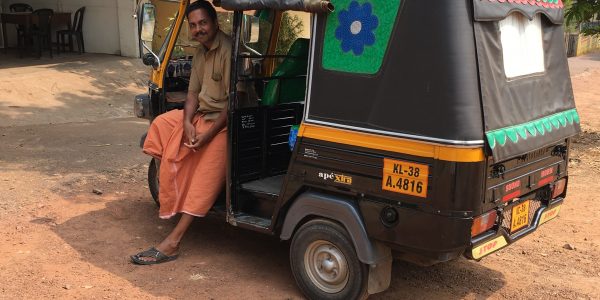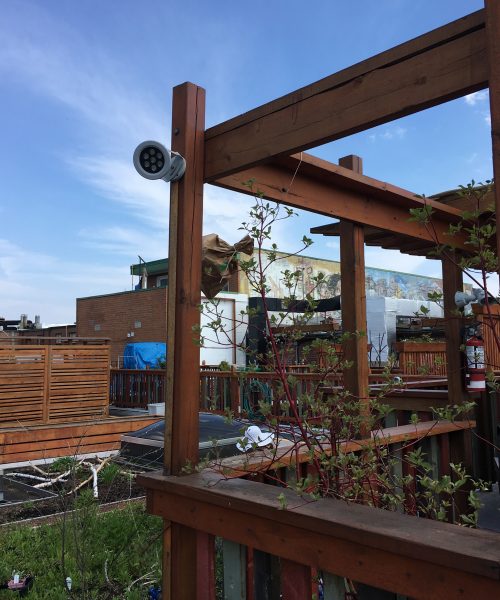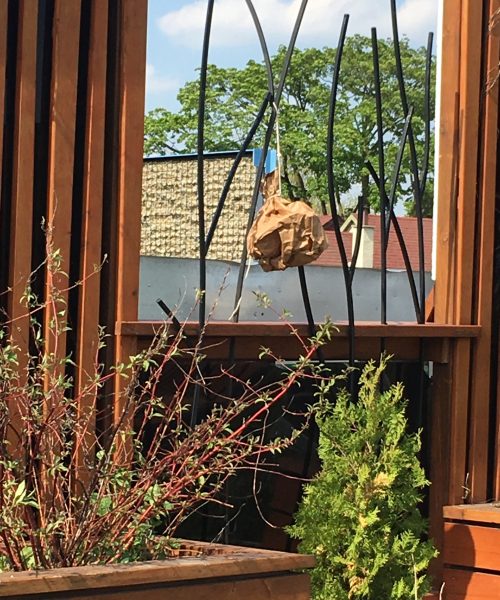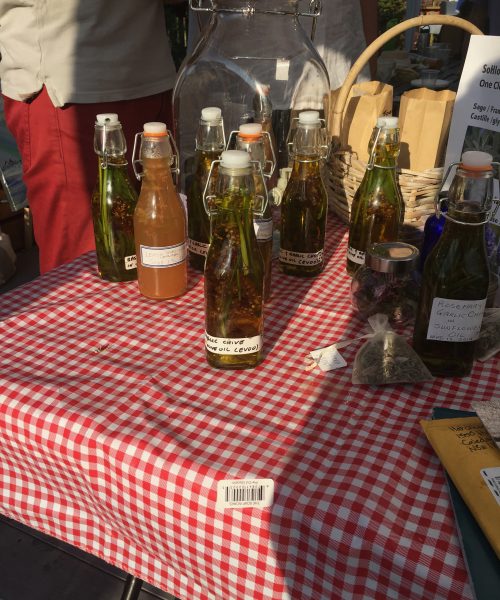India
I went to India to experience what practice is like in a Kerala Government Homeopathic Clinic. My host was Dr. Muhammed Rafeeque. Dr. Rafeeque is a Medical Officer in the Department of Homeopathy, Govt of Kerala.

He has authored a number of books, articles, presented papers in many international seminars. He also has taught around the world, including sessions for my study group, CHE. That’s how it came about that I would spend some time in Kochi doing what I love, Homeopathy.
There are typically about 100 patients a day that are treated in the clinic, solely by Dr. Rafeeque. Most of the patients came with every day illnesses such as colds, flu, sinusitis, frozen shoulder, tennis elbow. Each visit was approximately 5 to 10 minutes. Being there for a couple of weeks gave me the opportunity to see repeat visits.

What a difference between Homeopathic treatment being a primary treatment option in India and Homeopathic treatment being a secondary treatment option in the rest of the world, with the exception of France and Germany where 80% of doctors prescribe homeopathy. Typically people come to see me when they have not been successfully treated by every one else, and I mean: everyone else. Of course, people who were raised with homeopathy in those countries do come to see me second, sometimes third.
There are approximately 200,000 Homeopaths in India and Homeopathy is being practiced by 3rd and 4th generation homeopaths. Yes, that means that parents, grandparents, and great grandparents were also homeopaths. I would say that there are approximately 1,000 homeopaths in Canada, 500 being regulated in Ontario.
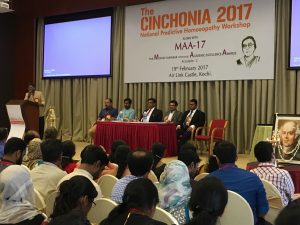
I attended the Cinchonia 2017 National Predictive Homeopathy workshop with Dr. Prafull Vijayakar, who is called “The Lion of Homeopathy”. Dr. Vijayakar has written a number of books and has taught his method all over the world. Homeopathic practice relies heavily on genetics. What is in our DNA, based on inherited predispositions and acquired susceptibilities, is what we address through our treatment. In other words, we think, “what is the weakness in this constitution to make them susceptible to this disease?” We watched cases of severe pathology treated with homeopathy. So this seminar was about the philosophy which Homeopathy is based on and the application of that philosophy in acute and chronic cases.
The learning never stops. In India where Homeopaths may see 30 to 100 patients a day there is no need, and no time, to practice any other form of treatment. If a Homeopath also practices other treatments here in Ontario it is not possible for them to know Homeopathy that well. Homeopathy is full time study. I study every day. I facilitated study groups for years. I belong to a study group. Why all this study? Because Homeopathy is a method of treatment based on philosophy and Laws which enable cure of the physical, mental, emotional, perceptual and spiritual…but that is the subject of another discussion. 🙂
Organic Gardening with Homeopathy (2017)

It was through my dear friend, and colleague, Debby Bruck, that I first met Vaiskunthanath Das Kaviraj. Kaviraj was a homeopath who had a decade of extensive experience in homeopathic treatment in an Indian rural clinic, travelled around the world and taught homeopathy while treating many in the process. In 1986 a friend asked him to to try treating an apple orchard that had developed a virulent bright red rust. This experience inspired the years of research in Australia and Europe that formed the basis of his book, Homeopathy for Farm and Garden.
Kaviraj was in Toronto, with no way to connect with Debby, and he was scheduled to be on her show in an hour. When Debby told me this I said, “Let him come here and plug in.” He grabbed a taxi and was here, in my clinic, with plenty of time for a cup of coffee and a quick breakfast, to participate in the Homeopathy World Community TalkBlogRadio show. I had the pleasure of listening, live and in person.
As I write this I have to mention that both my dear friend, Debby, and Kaviraj, have departed this world.
I learned a little about Homeopathy for the garden from Kaviraj over the years I knew him and have both editions of his book called “Homeopathy for Farm and Garden”.
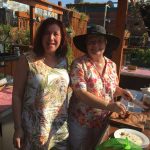
I had the opportunity last summer to use Homeopathy for the Seeds of Hope Foundation Organic Farming group down at the Carrot Common, or I should say, up on the rooftop of the Carrot Common on the Danforth. I taught the group about remedies for themselves as well as the garden, giving talks on such topics as first aid in the summer: bugs, fleas, lice, etc.; making teas; making lotions; making oils. The group turned their crops into these products.
I also treated some in the group for injuries and other things so they got a first hand feel for homeopathic treatment.
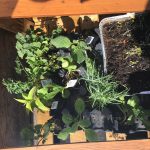
It was a summer of learning, for them, and for me. We treated aphids on the plants. We treated withering plants. We treated broken branches. We treated the soil for weeds.
It was a great experience for me and a reason to make me leave my office on a weekly basis to attend the natural outdoors, doing homeopathy, which I love.
“Living in the Eco-system in Toronto and
Maybe the Rest of the World”
Honey bees
Are you, like me, afraid of bees? There is a group of bee keepers that keep bee hives up on the rooftop of the Carrot Common on the Danforth. Last summer I was introduced to the hives while I was spending time with the Seeds of Hope Foundation organic gardening group. Ever since getting stung by a bee when I was 8 years old I have run away at their very presence.
I was very worried about being in such close proximity with them, as you can well imagine. I was told that wasps had attacked the beehives last summer and had killed the whole community of about 3,000 bees. So, while I was worried about getting stung by the bees, I was much more worried about wasps, because, you know, they are aggressive.
I have been using imposter wasp nests around my front and back yards for many years to deter them. There used to be a number of wasp nests around my house and if they see, what they think, is another wasp nest they will leave because they are territorial. It works.
 The Seeds of Hope group liked my idea of warding off the wasps and we gathered together a number of brown paper bags and hung them around the rooftop. You can see one of the bags blowing in the wind under the rafter in the picture. Well, of course it worked. After a couple of months the group actually purchased a few imposter wasp nests for the rooftop. After all, it’s also about aesthetics, isn’t it?
The Seeds of Hope group liked my idea of warding off the wasps and we gathered together a number of brown paper bags and hung them around the rooftop. You can see one of the bags blowing in the wind under the rafter in the picture. Well, of course it worked. After a couple of months the group actually purchased a few imposter wasp nests for the rooftop. After all, it’s also about aesthetics, isn’t it?
Let me tell you about the honey bees on the rooftop: they are very gentle, very sweet things. Yes, that’s right. They would land on me and I would just wave them off. Surprised? Me, too.
“The Bees are dying.”
You know that the bees are dying, right? 
This summer I learned a few new things about bees:
There are over 360 species of bees in Toronto.
According to Live Green Toronto (livegreentoronto.ca):
“Despite the significant media attention on the declining health of honey bees, evidence suggests that native bee species are even more threatened than honey bees, and when these species are lost, they cannot be replaced.
Honey bees can be re-established when beekeepers experience a loss.”
But it’s not just the bees
Butterflies are also at risk. There are 112 species of butterflies in Toronto. The 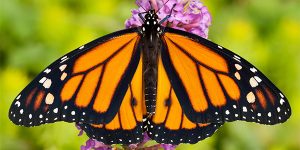 Monarch butterfly is classified as special Concern provincially and endangered federally. The Mottled Duskywing and the West Virginia White are at risk. The Karner Blue Butterfly is locally extinct.
Monarch butterfly is classified as special Concern provincially and endangered federally. The Mottled Duskywing and the West Virginia White are at risk. The Karner Blue Butterfly is locally extinct.
In order to nurture our butterflies we need to nurture our caterpillars. The caterpillars of each species of butterfly can only feed on specific plant species. For Monarchs, this plant is milkweed. The province of Ontario has removed milkweed from the noxious weed list.
We may not be fond of caterpillars but they are food for other animals and they play an important role in the ecosystem.
What can we do about the decline of pollinators?
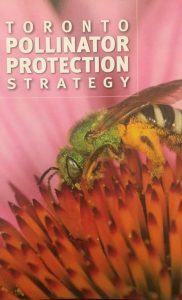
I picked up a booklet produced by the City of Toronto, Toronto Pollinator Protection Strategy. (livegreentoronto.ca) It has information about the problem and the strategies that the City has developed to deal with the phenomenon, as well as tips for all of us to create a pollinator-friendly garden.
I could list the tips from the booklet, but – hey – pick one up yourself. It’s free.
The David Suzuki Foundation produces Toronto Plant Guide for attracting Pollinators.

(davidsuzuki.org). It has great information and I discovered that I do, in fact, have some plants that attract pollinators. But I can do more.
The information is simple, stupid.
Let’s do something so that we can all feel like we’re helping!
